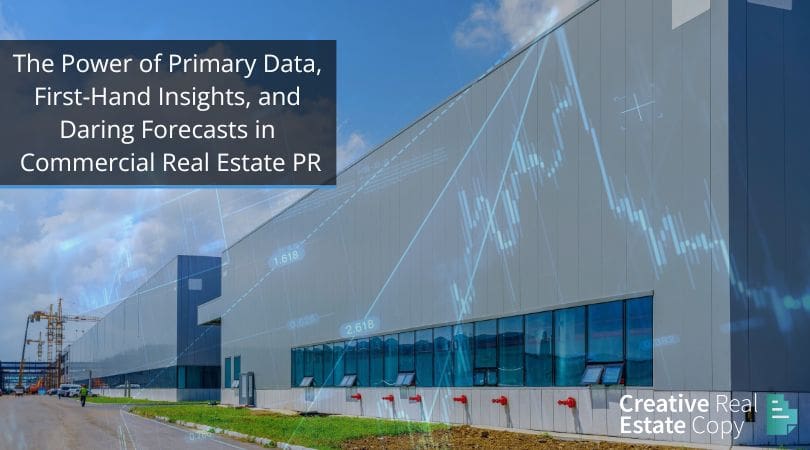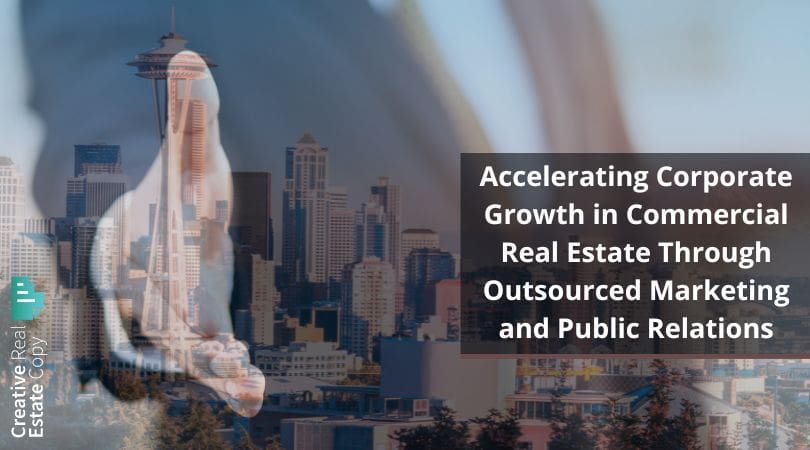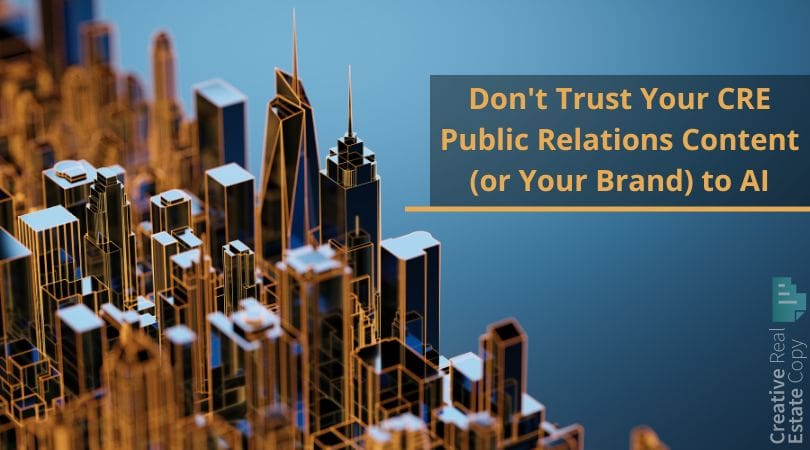What grabs journalists’ attention and resonates with their knowledge-hungry audiences?
In commercial real estate CRE public relations, the answer is providing unique, data-driven insights that inform and engage. Offering primary data, first-hand insights, and bold forecasts will elevate your PR strategy, setting your firm apart as a thought leader and trusted authority. Let’s explore the significant benefits of these tactics and how they can enhance your PR and brand-building efforts.
The role of primary data in CRE PR
Primary data refers to information collected directly from original sources. In the context of CRE, this includes surveys, interviews, and proprietary research tailored to uncover specific market trends, client needs, and industry shifts. Using primary data in your PR efforts enhances your credibility and establishes your firm as a knowledgeable authority.
When journalists receive pitches presenting original, scientifically collected data, they see valuable information that can support their stories and provide value to their readers. This data gives them fresh insights and a unique angle, making your pitch more attractive. Additionally, primary data helps you craft compelling narratives relevant to current and evolving market conditions.
For instance, an income-generating property owner or operator could conduct a detailed tenant satisfaction survey across different commercial property types to collect primary data. This data can highlight emerging trends, such as increasing demand for sustainable building features or the impact of remote work on office space requirements. These insights assist journalists in developing engaging stories and position your firm as a thought leader in addressing contemporary issues in CRE.
Leveraging first-hand insights
First-hand insights come from direct experiences and interactions within the CRE industry. These insights are valuable because they offer a unique perspective that can’t be derived from secondary sources. Sharing your experiences, case studies, and lessons learned provides authenticity and depth to your PR content.
Discussing the challenges and successes of a recent project or transaction can offer practical takeaways for your audience. Journalists appreciate these insights because they add a personal touch and human element to their stories. This type of content resonates well with readers, providing real-world examples and relatable experiences.
To illustrate, if you recently completed a redevelopment project in an urban area, sharing insights about navigating zoning laws, engaging with the community, and implementing sustainable practices provides a rich narrative. Journalists can use these details to create compelling stories that showcase your expertise, innovative approaches, and commitment to the community.
The impact of daring forecasts
Making brave predictions about future market conditions and industry developments will set you apart as a credible industry insider. While some shy away from making predictions, fearing they might be wrong and face criticism or damage to their reputation, it is important to understand the value they bring to your PR strategy.
Bold, data-supported market outlooks capture attention and generate buzz. They position your firm as forward-thinking and willing to take risks, qualities that are highly valued in the CRE industry. Moreover, daring forecasts can increase recurring media coverage as journalists seek your expert opinion on potential future scenarios.
It’s important to note that making forecasts is acceptable (and welcome), even if they don’t come true. Journalists and industry stakeholders understand projections are based on current data and assumptions — they’re not guarantees but educated guesses. Providing a balanced view, addressing both sides of an issue, and offering strategies and contingency plans enhance the value of your predictions and build trust with your audience.
The use of secondary data
Secondary data, which includes information gathered from existing sources such as industry reports, market analyses, and academic studies, can still be valuable in CRE PR. However, it is generally less impactful than primary data because it lacks the exclusivity and timeliness that primary data offers.
When using secondary data, attribute it correctly and enhance it with your unique insights. Consider referencing a well-known industry report on market trends and providing insights on how these movements might play out in your local market. This blend of secondary data and personal analysis gives journalists a richer, more nuanced story. Your analysis and interpretation of the data add value and demonstrate your expertise.
Integrating primary data, insights, and forecasts in PR strategies
To maximize the impact of your PR efforts, it’s essential to incorporate primary data, first-hand insights, and daring forecasts into a cohesive strategy. Here are some best practices:
Developing a Comprehensive Strategy
Outline your goals, target audience, and key messages. Determine the primary data you need to collect, the insights you can share, and the forecasts you can confidently make.
Presenting Data Effectively
Use clear visuals such as charts, graphs, and infographics to present your data. Highlight the key takeaways and explain their relevance to the current market.
Engaging with the Media
Tailor your pitches to the interests of individual journalists. Provide them with exclusive access to your data and insights, and offer to share more details through interviews or guest articles.
Using the Right Platforms
Disseminate your findings through multiple channels, including press releases, social media, industry blogs, and webinars. Ensure your content is accessible and engaging across all platforms.
Emphasizing Value Creation
Always focus on how your data and insights provide value to journalists and their audiences. Explain why your findings are significant and how they can be leveraged to inform decisions or spark discussions.
Other things to watch for
While primary data, first-hand insights, and daring forecasts can significantly enhance your PR strategy, there are challenges to consider:
Ensuring Accuracy
Data collection and analysis must be thorough and precise. Inaccurate data can damage your credibility and trustworthiness.
Building Trust
Transparency is vital. Be open about your data sources, methodologies, and assumptions. Address any limitations or uncertainties in your findings.
Balancing Boldness and Caution
While daring forecasts can generate buzz, balancing bold predictions with tempered perspectives is crucial. Offer strategies and contingency plans to address potential risks and uncertainties.
A proven PR strategy
Integrating primary data, first-hand insights, and daring forecasts into your CRE PR strategy can significantly enhance your firm’s visibility, credibility, and influence. These elements attract media attention and provide valuable content that resonates with audiences. Embracing thought leadership and data-driven insights positions your company as a trusted authority, drives innovation, and builds lasting relationships with clients and stakeholders.
Your Turn
Share your experiences with primary data and forecasts in the comments. How have these elements impacted your PR efforts?
Join the conversation and connect with industry peers to further enhance your PR strategies.









